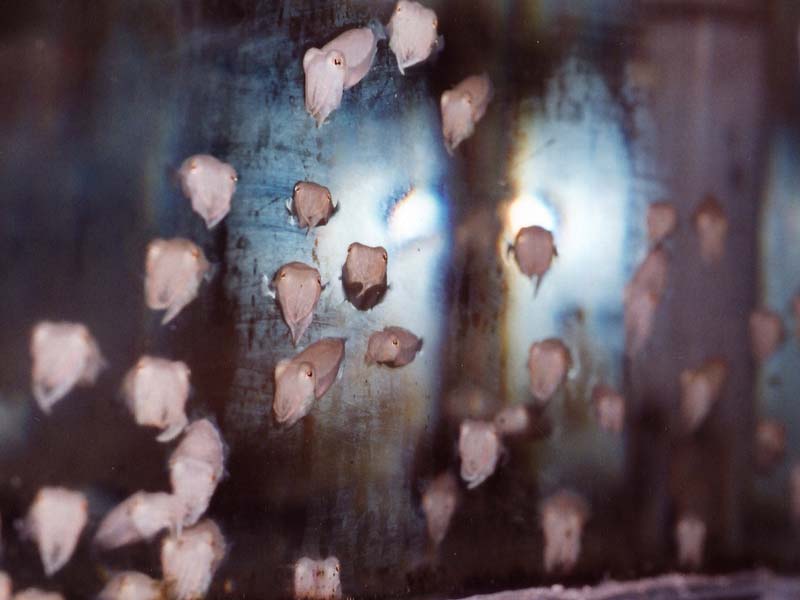Life History/Reproduction
It is important to understand two things about reproduction in Sepia officinalis. First of all, this species is dioecious, meaning they have both male and female sexes (MarineBio Conservation Society 2013). Second, that cuttlefish only go through one round of reproduction and die shortly after; this means that they are a semelparous species (Onsoy & Salman 2003). To understand this concept better, it can be compared to a salmon spawning in a river and dying right after. It is possible for it to happen all year round, but there are significant jumps in mating between the months of March and June. When this cycle occurs, cuttlebones can be found washed up on ocean shores all over the world (MarineBio Conservation Society 2013). Compared to mammals, these cephalopods’ lifespans are extremely short (1-2 years) and may seem insignificant to a human who lives for a much longer time (PIRSA Fisheries 2013). This is probably because, in our mind, we connect time on earth with increased intelligence. However, the cuttlefish is much different and their high intelligence level is with them at birth (Wood 1998).
MATING PROCESS
The actual process
Sepia officinalis go through during mating is quite fascinating
and unique in many ways. Two
 things determine dominance between
males: physical intimidation (no direct contact) and the best
looking den during mating season (Boal 1997). Similar to some other
animal species, the slightly larger males use color change as a
signal of attraction towards females. Upon successful reception of
this color queue, the pair will come face to face and grab ahold of
each other using their
arms (Wood 1998). The male will then shoot a
sperm packet, or spermatophore, into a small opening near the
female’s eye, called a
buccal area, using a specialized arm called the hectocotylized
arm (Dive the World 2013). This event is classified as internal
fertilization since it happens within the organism and not in the
open environment. After a short period, these spermatophores burst
and sperm travels up the oviduct where the eggs can be fertilized
(Wood 1998). Considering that there tend to be more males than
females in a given population, there is an occasional situation of
more than one male attempting to mate with the same female. When
this happens, the last male to deposit sperm will ‘win’ as the
father (Dive the World 2013). Following this, females lay clutches,
or groups of eggs covered with a special ink; acting as an adhesive
and camouflage from predation as well (Dive the World 2013). Putting
it into visual perspective, these eggs are relatively large (6-9
mm), so this tactic of trying to disguise them is necessary
(MarineBio Conservation Society 2013). While this series of events
is occurring the male usually
tends to his mate, acting as protector until the eggs are
successfully laid on the seabed, whether it be rocks or coral
formation (Onsoy & Salman 2003).
things determine dominance between
males: physical intimidation (no direct contact) and the best
looking den during mating season (Boal 1997). Similar to some other
animal species, the slightly larger males use color change as a
signal of attraction towards females. Upon successful reception of
this color queue, the pair will come face to face and grab ahold of
each other using their
arms (Wood 1998). The male will then shoot a
sperm packet, or spermatophore, into a small opening near the
female’s eye, called a
buccal area, using a specialized arm called the hectocotylized
arm (Dive the World 2013). This event is classified as internal
fertilization since it happens within the organism and not in the
open environment. After a short period, these spermatophores burst
and sperm travels up the oviduct where the eggs can be fertilized
(Wood 1998). Considering that there tend to be more males than
females in a given population, there is an occasional situation of
more than one male attempting to mate with the same female. When
this happens, the last male to deposit sperm will ‘win’ as the
father (Dive the World 2013). Following this, females lay clutches,
or groups of eggs covered with a special ink; acting as an adhesive
and camouflage from predation as well (Dive the World 2013). Putting
it into visual perspective, these eggs are relatively large (6-9
mm), so this tactic of trying to disguise them is necessary
(MarineBio Conservation Society 2013). While this series of events
is occurring the male usually
tends to his mate, acting as protector until the eggs are
successfully laid on the seabed, whether it be rocks or coral
formation (Onsoy & Salman 2003).
JUVENILE LIFE
After two to three months the young hatch into miniature versions of
their parents, and are provided nutrients from a yolk supply until
their first independent kill (Dive the World 2013). Unlike many
other organisms, including their close relatives, cuttlefish are
born with a highly developed brain
and their behavior proves this. At just a few weeks old, they can be
seen trailing tiny
crustaceans for a meal and utilizing their defense mechanisms
against potential predators (MarineBio Conservation Society 2013).
Perhaps their rapid maturation gives reason to why these
brilliant organisms only live for a maximum of two years (Onsoy &
Salman 2003).
provided nutrients from a yolk supply until
their first independent kill (Dive the World 2013). Unlike many
other organisms, including their close relatives, cuttlefish are
born with a highly developed brain
and their behavior proves this. At just a few weeks old, they can be
seen trailing tiny
crustaceans for a meal and utilizing their defense mechanisms
against potential predators (MarineBio Conservation Society 2013).
Perhaps their rapid maturation gives reason to why these
brilliant organisms only live for a maximum of two years (Onsoy &
Salman 2003).
![By Parent Géry (Own work) [Public domain], via Wikimedia Commons](travelportal/images/newheader.jpg)